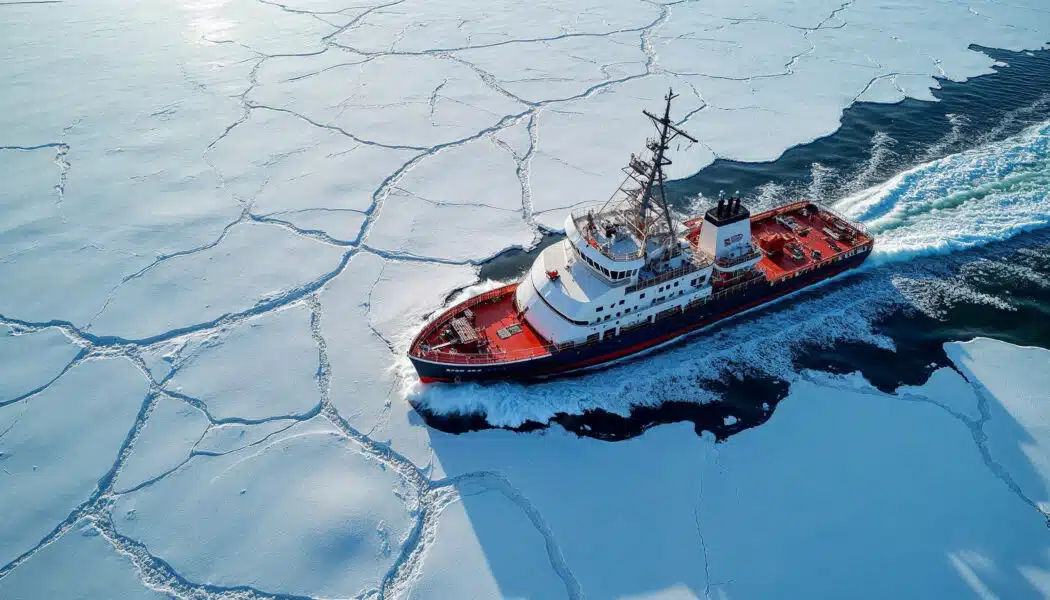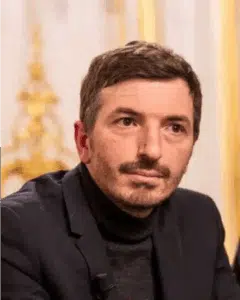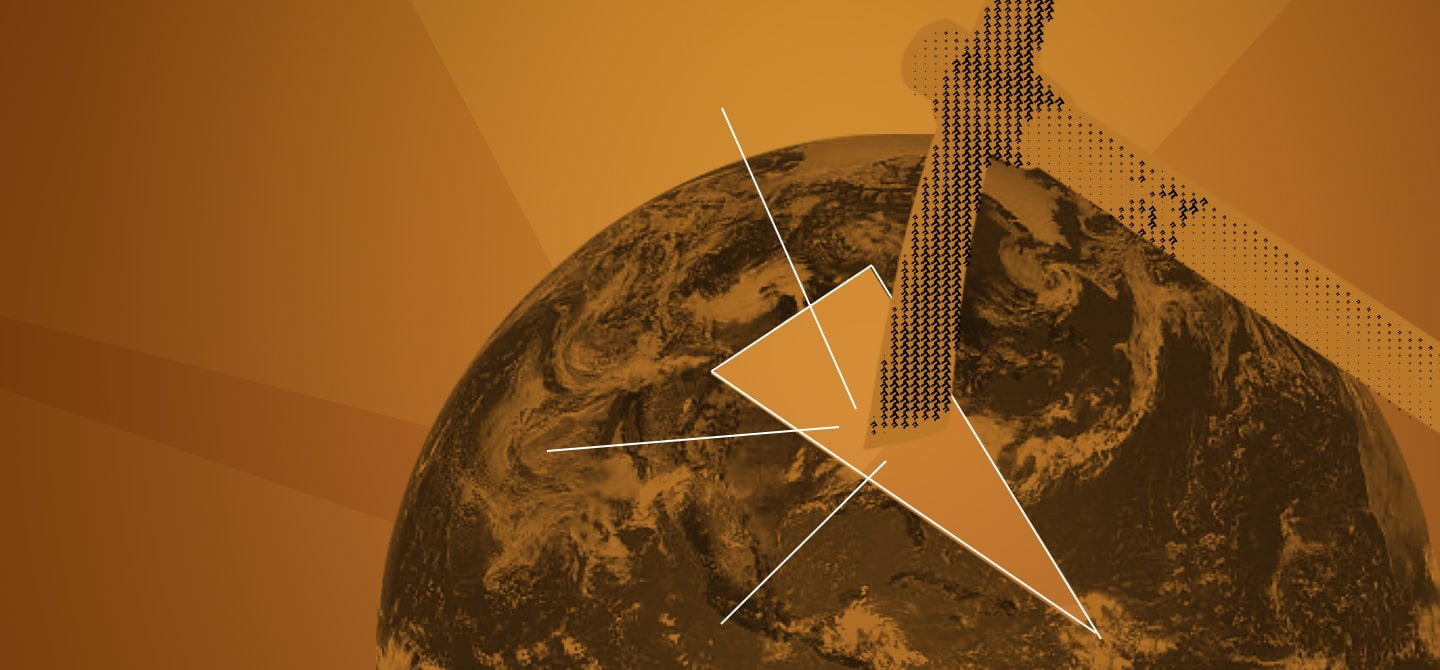Left behind after the fall of the USSR, the Arctic has once again become a strategic priority for Moscow since Vladimir Putin came to power. Rich in hydrocarbons and crossed by crucial maritime routes, the Far North now crystallises tensions between major powers. But the invasion of Ukraine and Western sanctions have upended Russian ambitions in the region. Florian Vidal, a researcher at UiT The Arctic University of Norway, analyses the economic and military stakes of this strategic space that could become a new front between Russia and the United States.
#1 The Far North is a strategic economic zone from the Kremlin’s point of view
TRUE
Since Vladimir Putin came to power in 2000, the Kremlin’s interest in the Arctic has only grown. After having been largely abandoned following the fall of the Soviet Union, Moscow has regained control of this area, as its great strategic potential, particularly in terms of hydrocarbons, has revived its polar ambitions. Indeed, 80% of the gas and 60% of the oil produced on Russian territory comes from the Arctic region.
The exploitation of liquefied natural gas (LNG) on the Yamal Peninsula in the Kara Sea is undoubtedly symbolic of the success of the programme to reinvest in the region. However, this flagship project remains dependent on the development of communication infrastructure dedicated to the transport and export of resources. The development of the Northern Sea Route and its ports have been envisaged in tandem with the exploitation of the Arctic subsoil. Until the invasion of Ukraine, the strategy had been successful: hydrocarbons generated 50% of federal budget revenues, while the Arctic contributed 17% to national GDP.
UNCERTAIN
There are two major caveats to the Kremlin’s geo-economic projections. Firstly, there is no denying the structural trends in society, which are particularly evident in the northernmost parts of the country. The demographic decline is a striking example of this, affecting even urban centres such as Murmansk, whose population has been steadily declining since the late 1980s.
Secondly, the large-scale invasion of Ukraine and the barrage of sanctions against Russia are, unsurprisingly, hampering investment and the progress of ongoing projects. Russian companies are finding it difficult not only to export, but also to access the Western technologies they need for production. For example, Novatek, which operates the Yamal LNG and Arctic LNG 2 projects, depended on the German group Siemens for the supply of gas turbine generators and vapour gas compressors.
With the implementation of sanctions in the banking sector, which targeted investment projects in the energy sector in the region since the annexation of Crimea in 2014, Western countries have slowed down Russia’s financial capabilities, which has attracted only limited investment despite a shift towards BRICS+.
#2 Vladimir Putin has turned it into a militarised region
FALSE
This statement is partially inaccurate: the militarisation of the Arctic is not a new phenomenon. Its origins date back nearly a century, with the early establishment of a military presence in the region. The Northern Fleet was officially established under Stalin before the Second World War. It should be noted that regional tensions were, in many respects, more intense during the Cold War than they are today.
TRUE
Since 2005, the Russian authorities have undeniably stepped up their military presence in the Arctic by reopening former naval and air bases dating back to the Soviet era. In addition to modernising existing bases, new infrastructure has been created. Led by the Ministry of Defence, this dynamic has transformed the region into a veritable technological showcase, displaying cutting-edge military equipment (hypersonic missiles, latest-generation combat aircraft, etc.). Furthermore, on the Kola Peninsula, the Northern Fleet has also been modernised. Its nuclear capabilities have been strengthened by the construction of new submarines. All these developments serve a clear objective: to assert military superiority and strategic dominance in the area. Today, the Nordic countries recognise this established state of affairs.
UNCERTAIN
A significant portion of the Russian army’s contingents in the Arctic have been mobilised for the war effort in Ukraine. The capacity of conventional forces in the region has been considerably weakened by the destruction of military equipment and significant losses among combat units. The coastline, which stretches for more than 24,000 kilometres and is dotted with islands and archipelagos, makes it a difficult area to cover. To address these difficulties, one of the options being considered is the deployment of an armada of drones along the coast. At the same time, a massive recruitment drive for 50,000 soldiers has also been announced to achieve a force of 80,000 soldiers in the Leningrad Military District, the region between Saint Petersburg and Murmansk.
#3 The Arctic could be the next battleground between Russia and the United States
TRUE
Awareness of this new military reality emerged during Donald Trump’s first term in office. Mike Pompeo, then Secretary of State, did not hesitate to describe the increased Russian and Chinese presence in the area as a joint threat to the United States. With the need to rebuild capacity, the Biden administration has pursued a policy of re-engagement in the region, championing freedom of navigation and committing to the development of a new fleet of polar icebreakers – the United States currently has only two.
President Trump’s volatility and controversial announcements, particularly his aggressive approach towards Greenland, could contribute to creating a climate of insecurity in the region. One imperialist impulse could trigger another. Russia, for its part, has its eye on Svalbard, a Norwegian archipelago. The risk now is that the region will enter into a transactional, bilateral approach based on power relations, whereas since the end of the Cold War it has been distinguished by its institutional framework based on multilateralism.
FALSE
In this region, which is less prone to conflict, cooperation remains the preferred approach. In fact, the Arctic states may be tempted to preserve the achievements of the post-Cold War era, in particular the Arctic Council, which could serve as an interface for resuming dialogue in the future. Economic development, particularly in the joint exploitation of Arctic resources, could provide a basis for understanding between Washington and Moscow, thus offering leverage to prevent any military escalation.








